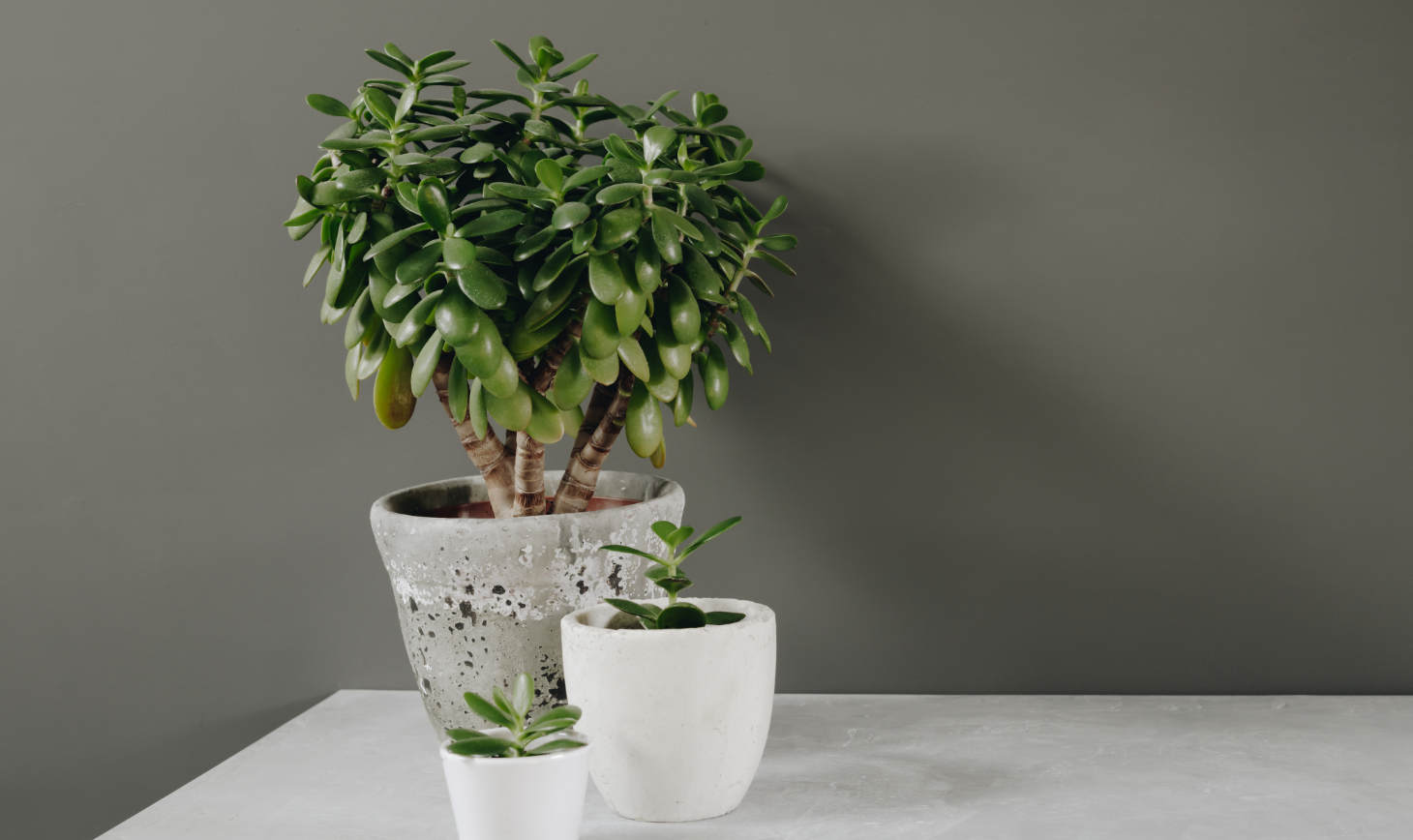Crassula Ovata (Jade Plant) Soil
Crassula ovata, or jade plant, is a popular succulent known for its thick, fleshy leaves and low-maintenance nature. If you’re thinking about growing one, you might wonder about the best soil for these hardy plants. Jade plants thrive in well-draining, slightly acidic soil with a pH around 6.0.
A good soil mix for your jade plant combines light and airy elements. You can use a pre-made cactus or succulent mix, or create your own by mixing potting soil, coarse sand, and perlite or pumice. While commercial cactus or succulent mixes are an option, be aware that many retain too much moisture and will only work well if they are very well-draining.
For a guaranteed well-draining option, consider our succulent soil. Our expertly formulated blend provides the perfect balance of drainage and moisture retention, preventing root rot and other moisture-related issues while still providing the nutrients your succulents need.
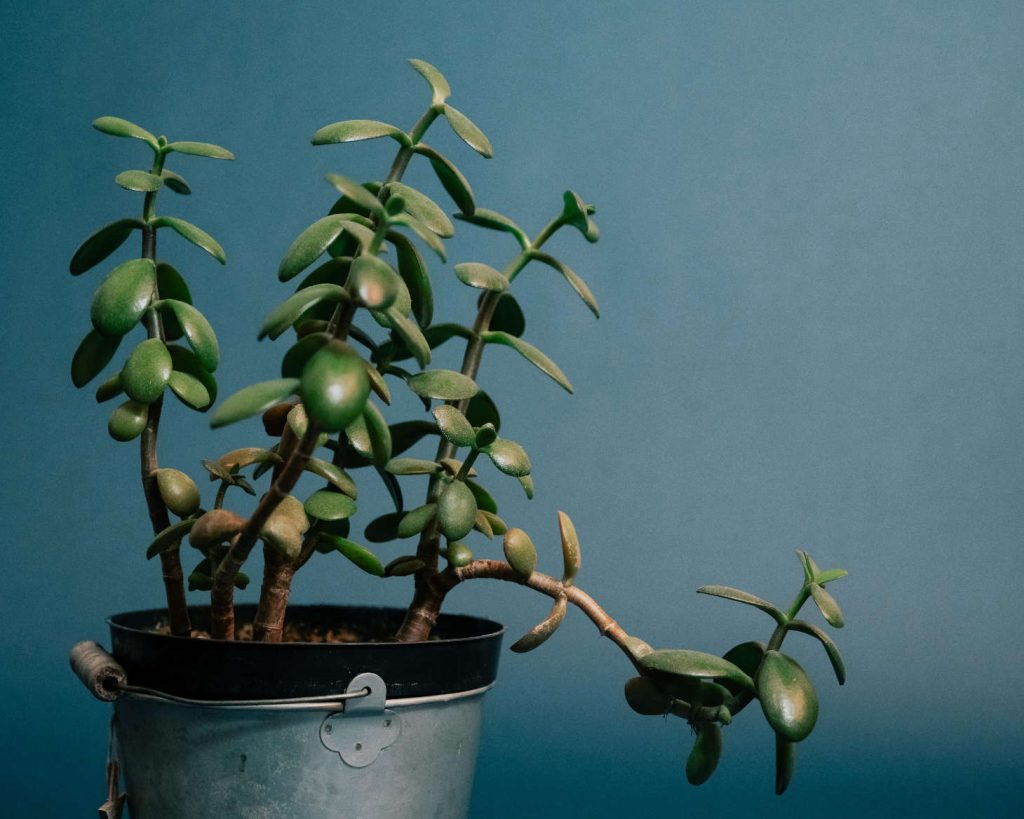
When potting your jade plant, make sure to choose a container with drainage holes. This lets excess water escape and keeps the soil from becoming waterlogged. With the right soil and proper care, your jade plant can grow into a beautiful, long-lasting addition to your home.
Key Takeaways
- Jade plants need well-draining, slightly acidic soil to thrive
- You can use a pre-made cactus mix or create your own soil blend
- Good drainage is crucial for jade plant health and growth
Understanding Crassula Ovata
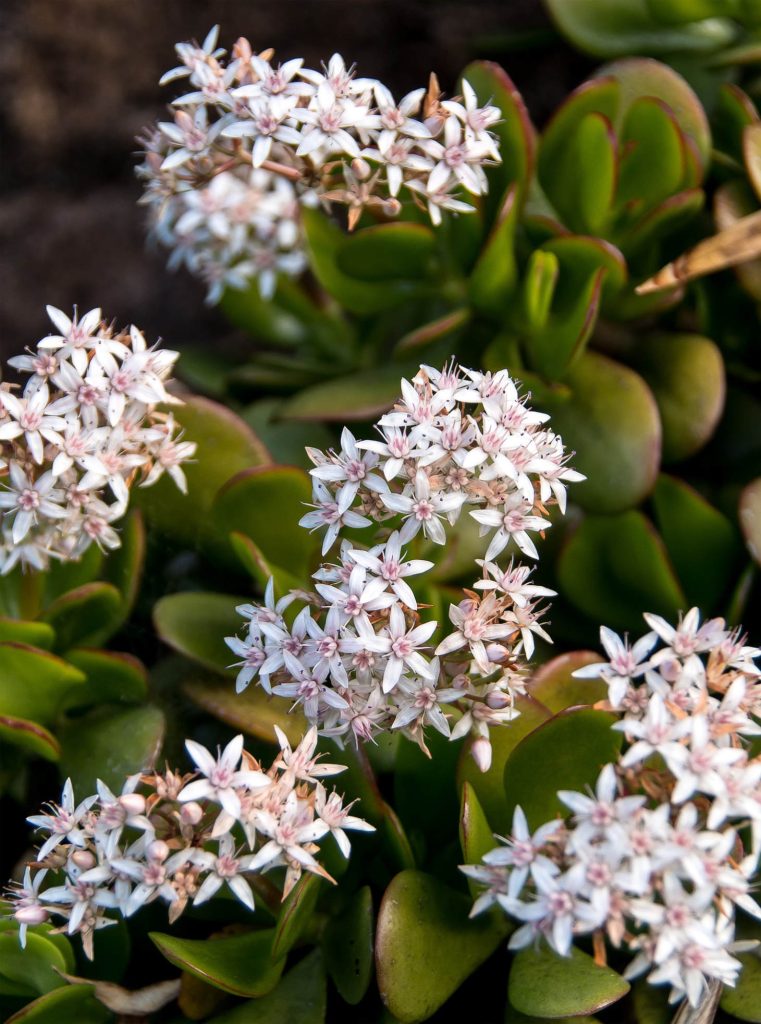
Crassula ovata, also known as the jade plant, is a popular succulent with unique features. It’s easy to care for and can bring a touch of green to your home or office.
Species Overview and Origin
Crassula ovata belongs to the Crassulaceae family. It’s native to South Africa and Mozambique. In these regions, you’ll find it growing wild in rocky areas.
The jade plant thrives in warm, dry climates. It can handle drought well, which makes it perfect for indoor growing. You might see it in gardens in places with similar weather to its native home.
Plant Characteristics
Jade plants have thick, green leaves that look like ovals. These leaves can store water, helping the plant survive dry spells. The leaves often have a red tinge on the edges when exposed to lots of sun.
These plants grow slowly but can live for many years. With good care, your jade plant might even outlive you! They can reach heights of 3 to 6 feet when grown outdoors.
In the right conditions, jade plants produce small, star-shaped flowers. These blooms are usually white or pink and appear in clusters. Flowering typically happens in late winter or early spring.
The fruit of the jade plant is a small capsule containing tiny seeds.
Soil Basics for Jade Plants
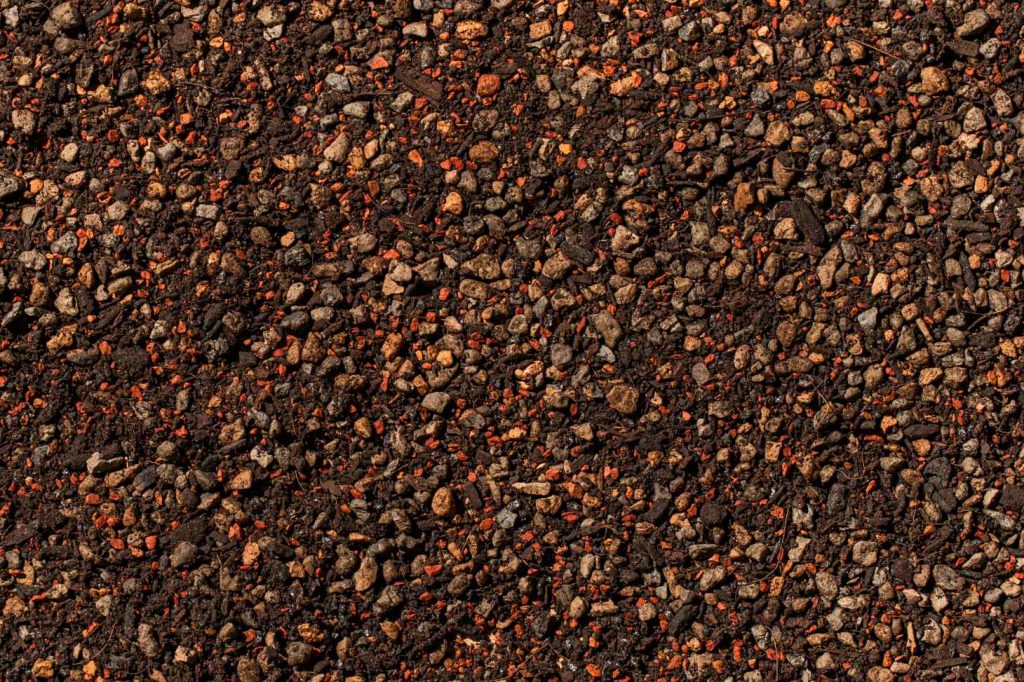
Jade plants need the right soil to thrive. Good soil helps them grow strong and healthy. Let’s look at what makes the best soil for your jade plant.
Ideal Soil Composition
Your jade plant likes soil that drains well. Mix regular potting soil with coarse sand and perlite. This creates air pockets for roots to breathe.
Here’s a simple recipe:
- 3 parts potting soil
- 2 part coarse sand
- 1 part perlite or pumice
You can also use cactus soil as a base. Add some coconut coir to help hold water. Avoid using too much organic matter. Jade plants don’t need rich soil.
But here’s the easier, more effective solution: Our high-performing succulent soil is perfectly formulated for jade plants! It already contains the ideal balance of ingredients to ensure excellent drainage, aeration, and the proper nutrient levels your jade needs to flourish. No measuring, no mixing, no mess!
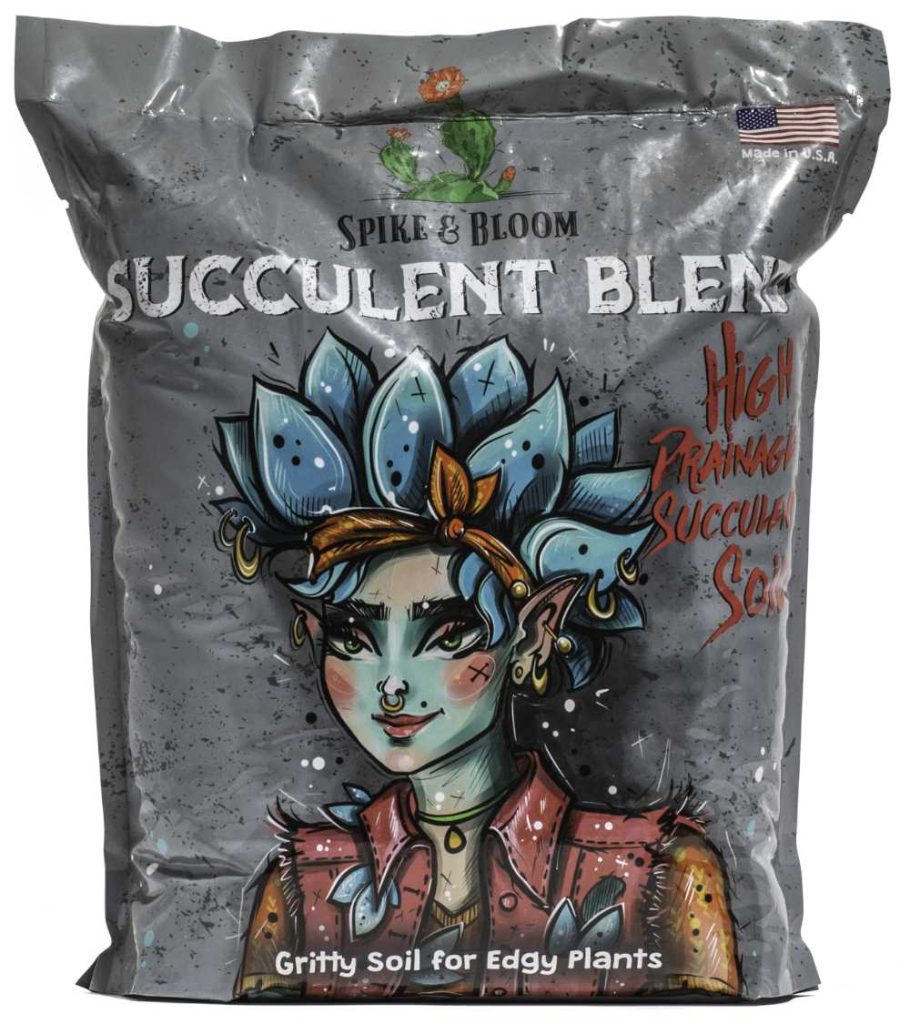
See that? You’re already picturing your jade plant thriving in our soil! Ready to give it a try?
Drainage and Aeration
Jade plants hate wet feet. Make sure your pot has drainage holes. This lets extra water flow out.
Add chunky materials to your soil mix:
- Perlite
- Pumice
These create spaces for air and water to move. Good air flow keeps roots healthy. It also stops water from sitting in the pot.
Use a pot that’s not too big. A snug fit helps soil dry out faster. This prevents root rot.
pH Preferences
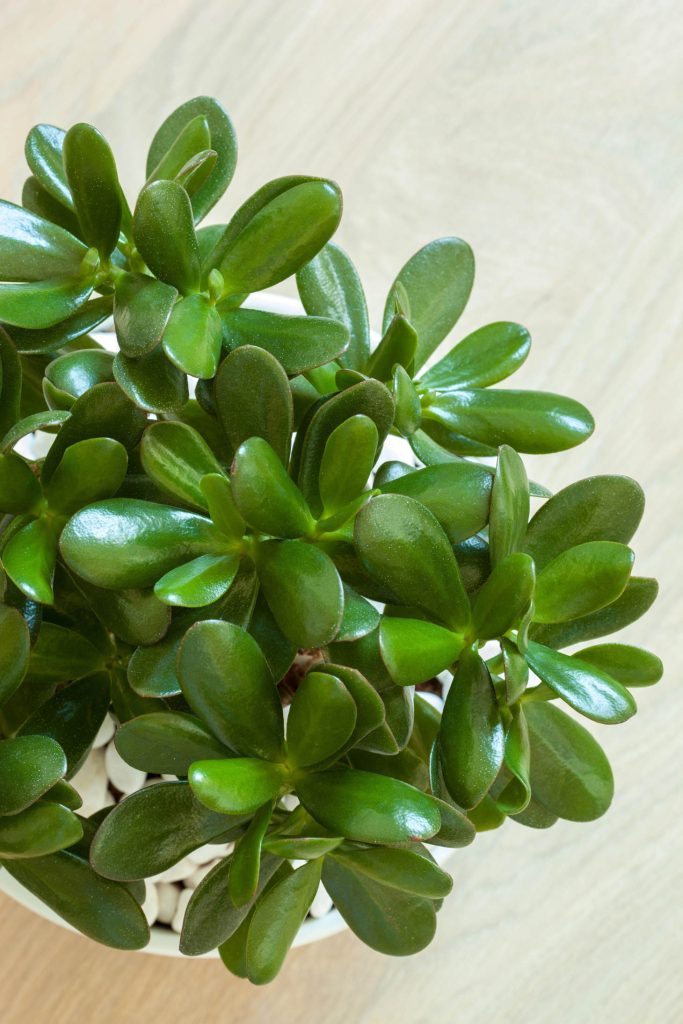
Jade plants like soil that’s a bit acidic. Aim for a pH between 6.0 and 6.5. This helps them take up nutrients better.
You can test soil pH with a simple kit from a garden store. If your soil is too alkaline, add some peat moss. This lowers pH naturally.
Don’t worry too much about exact numbers. Jade plants are pretty tough. They can handle a range of pH levels. Just avoid extremely acidic or alkaline soils.
If you use tap water, it might change your soil pH over time. Rainwater or filtered water is better for watering your jade plant.
Maintaining Plant Health
Proper care keeps your jade plant thriving. Focus on watering, light, and pest control to ensure your crassula ovata stays healthy for years to come.
Watering and Moisture
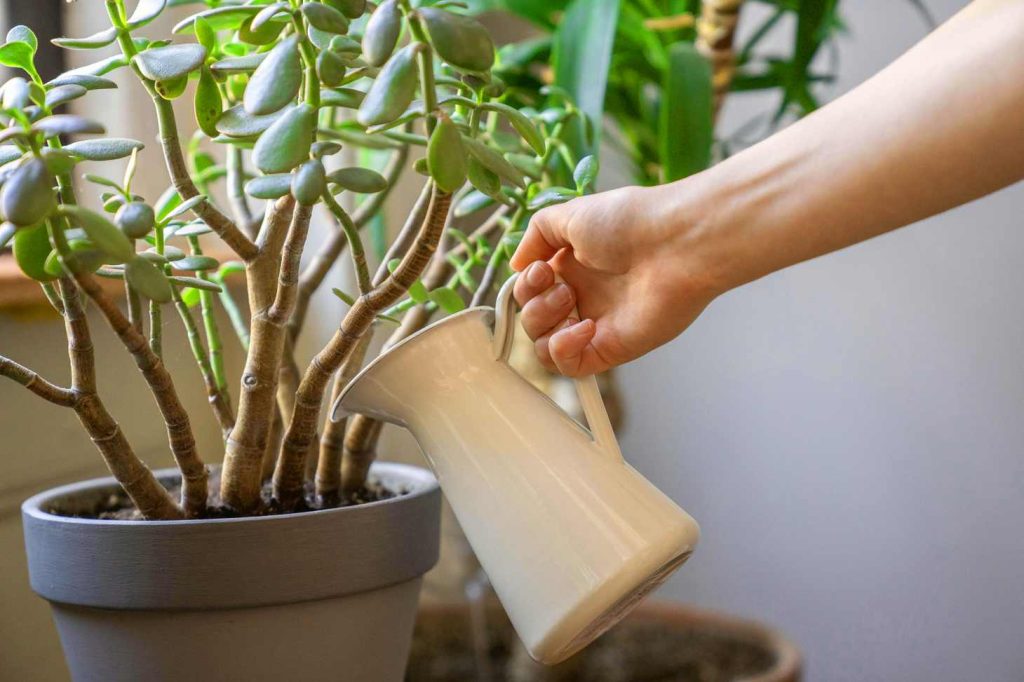
Water your jade plant sparingly. Let the soil dry out between waterings. In winter, cut back even more.
Overwatering leads to root rot. Watch for mushy stems or yellowing leaves, signs you’re watering too much.
Use a pot with drainage holes. This stops water from pooling at the bottom.
Create a watering schedule, but adjust based on your plant’s needs. Factors like pot size and indoor climate affect how often to water.
Sunlight and Temperature
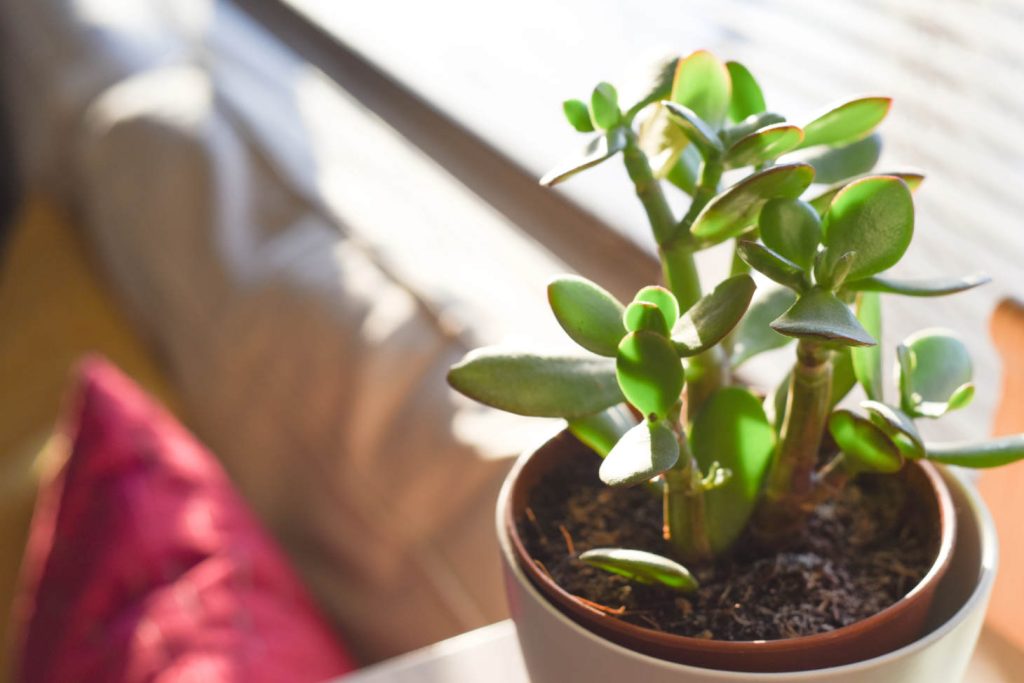
Jade plants love bright light. Put yours in a sunny spot, like a south-facing window.
They can handle full sun, but introduce it slowly to avoid leaf burn. (Ask me how I know?!)
Keep temps between 65-75°F (18-24°C). They can tolerate brief exposure to temperatures below 50°F, but prolonged cold spells can lead to leaf drop and root damage.
In summer, you can move your jade plant outside. Bring it in before the first frost.
Jade plants are hardy in zones 10-11. If you live somewhere colder, keep them as indoor plants.
Common Pests and Issues
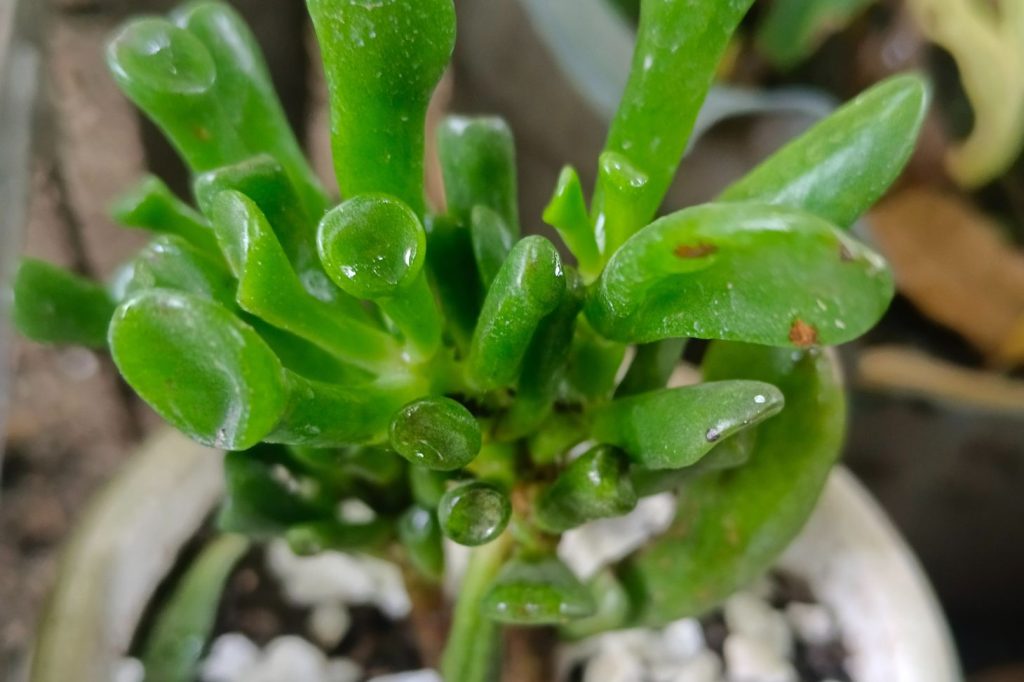
Check your plant often for pests. Mealybugs and spider mites are common jade plant enemies.
Spot mealybugs as white, fuzzy spots. Spider mites leave tiny webs between leaves.
To treat, wipe leaves with rubbing alcohol or use insecticidal soap.
Watch for signs of mold on the soil surface. This means you’re overwatering or the air is too humid.
Yellowing leaves can mean too much water, not enough light, or pest problems.
To boost overall plant health, clean the leaves regularly with a damp cloth. This helps the plant breathe and photosynthesize better.
Propagation and Repotting
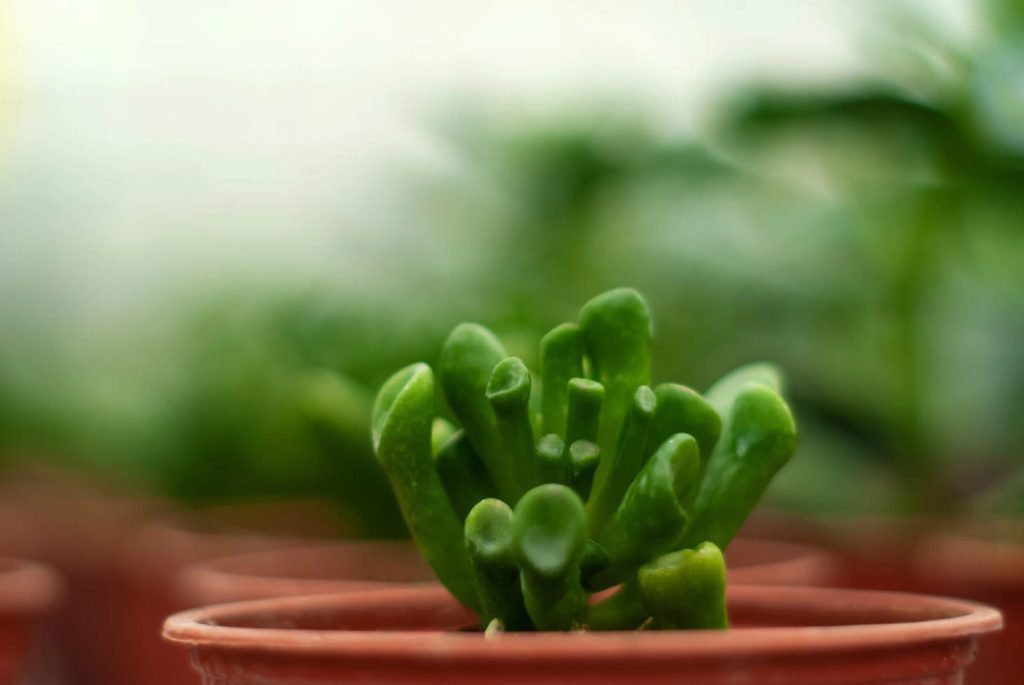
Jade plants are easy to grow and multiply. You can create new plants from cuttings or repot existing ones to keep them healthy and thriving.
How to Propagate Your Jade Plant
You can grow new jade plants from stem or leaf cuttings. For stem cuttings, cut a 3-4 inch piece from a healthy stem. Remove the lower leaves and let the cut end dry for a few days. Then, stick it in moist soil or water.
For leaf cuttings, gently twist off a leaf and let it callous over for 2-3 days. Place it on top of soil, and tiny roots will form at the base.
Keep cuttings in bright, indirect light. Water sparingly until roots develop. It can take 2-3 weeks for roots to grow. Be patient!
Repotting Essentials
Repot your jade plant every 2-3 years or when it outgrows its pot. Choose a container 1-2 inches larger with drainage holes. Use a well-draining soil mix made for succulents.
Water jade plants 1-2 days before repotting to help ease the plant out of its old pot and reduce stress on the roots. Gently remove the plant and shake off old soil. Trim any dead or rotting roots. Place in the new pot and fill with fresh soil.
Wait a week before watering. Keep it in a bright spot but out of direct sun while it adjusts. Your jade will soon settle into its new home!
Beyond the Basics: Extra Care
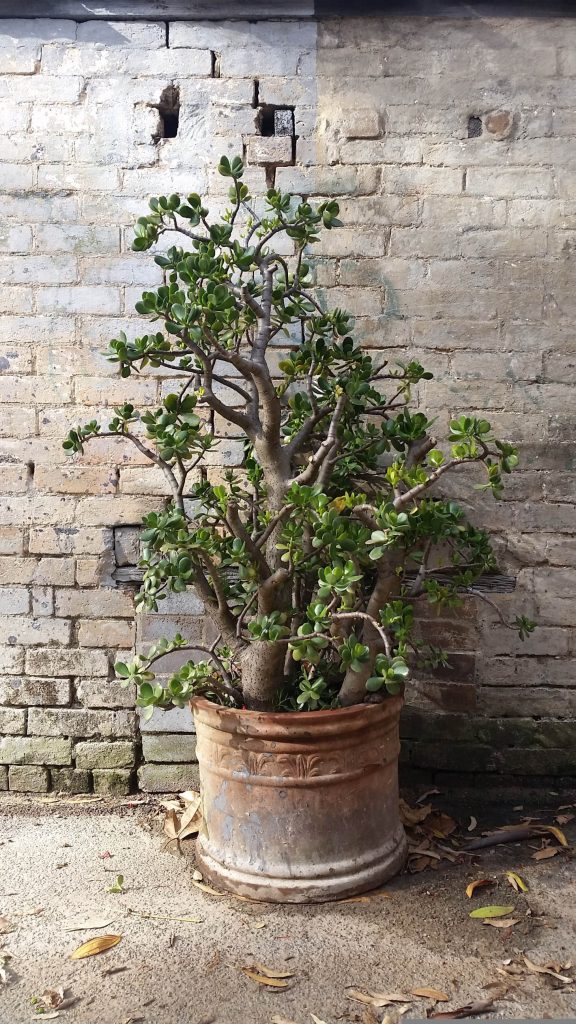
Caring for your jade plant goes beyond just watering and soil. Let’s dig into some advanced tips to help your Crassula ovata thrive and look its best.
Pruning and Shaping
Pruning your jade plant helps it grow fuller and keeps it looking neat. Use clean, sharp scissors to cut off any dead or yellowing leaves. You can also trim branches to shape your plant. Some folks even turn their jades into bonsai trees!
Try cutting just above a leaf node to encourage branching. Don’t be scared to prune. Jades are tough cookies. Just don’t go overboard. Aim to remove no more than 20% of the plant at once.
Save those cuttings! You can easily grow new plants from them. Just let the cut end dry for a few days, then stick it in some soil.
Fertilizing and Nutrients
Jade plants don’t need much food, but a little boost now and then helps them grow strong. Use a balanced, water-soluble fertilizer made for succulents. Feed your plant every 2-3 months during spring and summer.
Go easy on the fertilizer. Too much can harm your plant. Dilute it to half the strength on the label. Skip feeding in fall and winter when growth slows down.
If your jade’s leaves look pale, it might need more nutrients. Try adding a pinch of Epsom salt to the soil for a magnesium boost.
Special Varieties
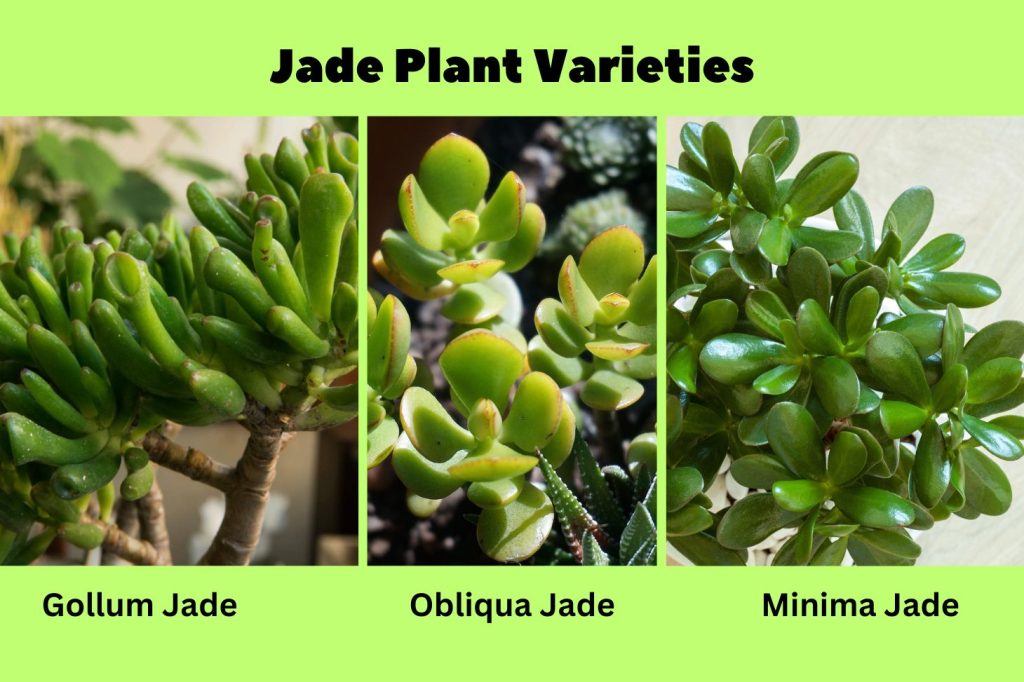
There are some cool jade plant varieties out there. The ‘Gollum’ jade has tubular leaves that look like little green fingers. ‘Hobbit’ is similar, but with curled and slightly flattened leaf tips.
‘Obliqua’ has twisted stems and angled leaves. ‘Minima’ is a cute, compact variety perfect for small spaces. And don’t forget the ‘Skinny Fingers’ jade with elongated tubular leaves!
These special types need the same care as regular jades. They are sensitive to overwatering.
Watch out if you have pets. Jade plants are mildly toxic to cats and dogs if eaten. It’s best to keep them out of reach of curious critters.
Frequently Asked Questions
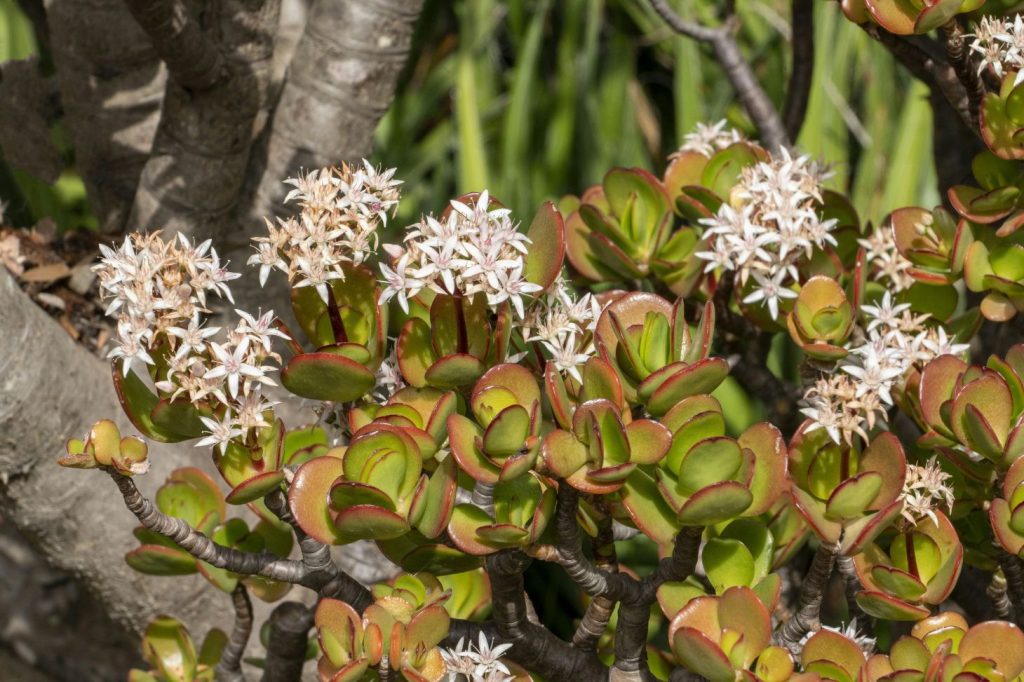
Jade plants need special soil to thrive. Here are some common questions about the best soil for these popular succulents.
What’s the perfect soil mix for a Crassula ovata plant?
The ideal mix for jade plants is 3 parts potting soil, 1 part coarse sand, and 1 part perlite. This combo gives good drainage and aeration. It helps prevent root rot, which can kill your plant.
Can I get away with using regular cactus mix for my jade?
Cactus soil can be suitable for jade plants if mixed with perlite or coarse sand to improve drainage.
Got any tips for the best soil to use when propagating jade plants?
For jade cuttings, use a mix of 50% cactus soil, 25% perlite or pumice, and 25% coarse sand to ensure proper drainage. This light mix helps new roots grow quickly. Once roots form, move the plant to regular jade soil.
Do jade plants do well with indoor potting soil?
Regular potting soil is too heavy for jades. It holds too much water and can cause root problems. If you only have potting soil, mix in lots of perlite or coarse sand to improve drainage.
When repotting, what type of soil should I use for my ‘Gollum’ jade?
‘Gollum’ jades need the same well-draining soil as other jade types. Use a mix of 3 parts potting soil, 2 parts coarse sand, and 1 part perlite. This keeps the unique leaves healthy.
Is orchid mix a good substitute for jade plant soil?
Orchid mix alone isn’t great for jades. It’s too loose and doesn’t hold enough nutrients. You can use it if you mix it with regular potting soil and add some coarse sand for weight.

